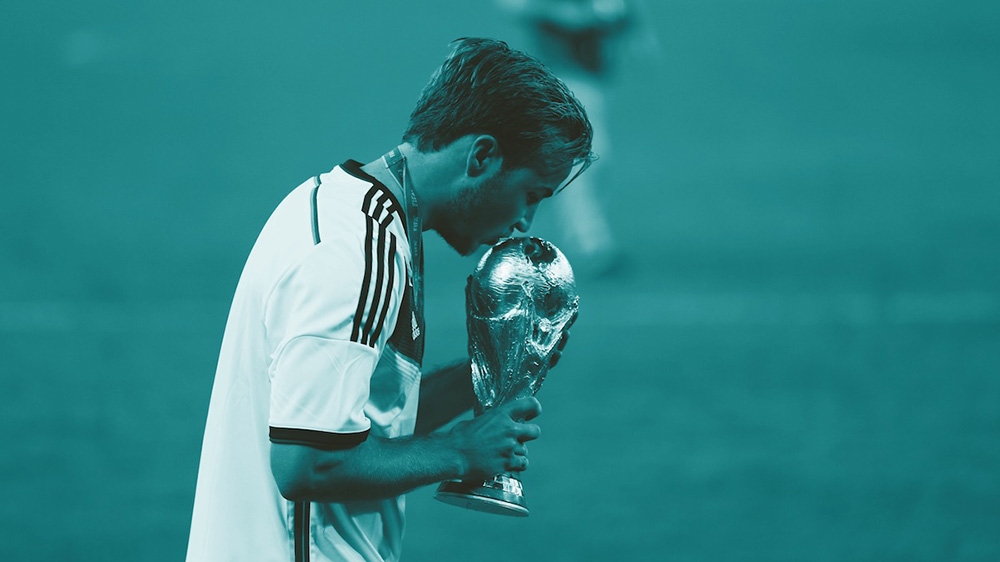World Cup 2018: Can Iceland stun the world again?
With a population of just 330,000, how has Iceland risen from being ranked 131 to beating England and the Netherlands?

Iceland has a population of just over 330,000.
It’s football team was ranked 131 in 2010.
Keep reading
list of 4 itemsRio Mayor on hosting World Cup, Olympics together: ‘DON’T!’
‘As important as Pele’: Brazil mourns football great Zagallo
Football ‘can bring joy’ to Lebanon amid Gaza war
The national coach still works as a part-time dentist.
Heavy snowfall in the country makes outdoor training impossible for almost half the year.
But it topped the qualifying ground for World Cup 2018.
Add to that, Iceland has already registered wins over Croatia, the Netherlands and England.
And on Saturday, it will become the smallest nation ever to compete at a World Cup.
Once the backwater of European football, Iceland’s debut against Argentina will complete a remarkable journey which has already taken them to the Euro 2016 quarter-finals and has transfixed football fans and coaches alike across the world.
In order to fully understand how Iceland has transformed their footballing fortunes, the clock needs to be turned back to October 2007.
It was one of the darkest nights of Iceland’s football history – a 3-0 defeat in Liechtenstein.
“I think it was the lowest point in Icelandic football,” defender Kristjan Sigurdsson, who started that day, told Al Jazeera.

“Unbelievable. There are just 37,000 people in Liechtenstein. But it was like that back then. We might win against a good team, and then lose to some terrible team.”
Back then, Iceland’s national team was made up of a spectrum of players, ranging from Chelsea and Barcelona striker Eidur Gudjohnsen to the part-timers who competed in the Urvalsdeild karla – the Icelandic Premier League – around their jobs.
As Sigurdsson put it: “Tractor by day, footballer by night.”
But following that loss, few really believed Iceland could succeed on the global stage.
“The players were not really coming to compete for the national team,” said Sigurdsson.
“It was more of a vacation from the clubs in the middle of the season. If there was a national break with games on a Wednesday and a Saturday, the whole team would go out after the first game and get wasted.
“Gudjohnsen was bigger than the team. If he wanted some players to come out with him, they did. They had no respect or fear of the coaches. That’s not the path to success.”
Funding woes
For former midfielder Brynjar Gunnarsson, many problems stemmed from the paucity of resources being invested in the national team.
Lack of funding meant players couldn’t even rely on being given shirts which fit them properly.
“We had professionals coming into a completely amateurish set-up,” said Gunnarsson.
“If you weren’t quick enough into the kit room, you’d just have to take whatever was left and play in it, even if it was XXXL.”
Despite the saga on the national level, an unlikely football revolution was already under way at younger levels.
In the early 2000s, the Icelandic FA began a new project to build hundreds of “football houses” across the country, to find a sporting solution to the brutal winters.
Funded by the taxpayers, there is now one of these full-size, indoor artificial grass pitches next to every school in the land. And along with the facilities, there is a drive to produce highly trained staff, resulting in 600 elite UEFA-qualified coaches in Iceland.
That is one in every 550 people.

This meant that a new generation of Icelandic footballers had access to training grounds their predecessors could only have dreamt of.
Among this crop of players were Gylfi Sigurdsson, the current team’s talisman, and captain Aron Gunnarsson. In 2011, an Icelandic team that including the pair qualified for the Euro U21 Championships for the first time in the country’s history.
Suddenly, Iceland players were being noticed by overseas scouts.
“You could see the amount of talent starting to emerge,” said former goalkeeper Ingvar Kale.
“We’d have shooting drills and I was just crying as a keeper. Every ball would be in the top corner. Competition for places became so fierce. These days you don’t get in the national team unless you’re playing abroad.”
Buoyed by the success of their youth team, the Icelandic FA persuaded veteran Swede Lars Lagerback to forgo retirement and work alongside main coach Heimir Hallgrimsson with the national team.
A former coach with the Swedish and Nigerian national teams, Lagerback introduced a new professionalism to the Iceland setup, hiring physios, masseurs, and even sports psychologists.
But most of all, he began to build a team which was no longer based not around one or two star names, but on traditional Icelandic values of discipline and work ethic.

“Lagerback, with all his experience, realised that in order to compete with big teams, Iceland had to rely on team spirit and organisations,” said Brynjar Gunnarsson.
“He also realised that by persuading the FA to spend a little more money on making the players feel at home when they’re with the team, you get the right attitude and performances on the pitch.”
Lagerback will not be with Iceland in Russia, having stepped down after Euro 2016, but the belief he instilled in the squad remains.
Despite being drawn with Argentina, Nigeria and Croatia, there is a genuine feeling among Icelanders that their country can once again progress to the knockout stages of a major competition.
“If an English or Italian player makes a mistake, the press will kill him the next day,” said Kale.
“But if that happens to an Icelandic player, everyone remains supportive. We know that we don’t have the best players in the world but we have the best spirit.”
|
|